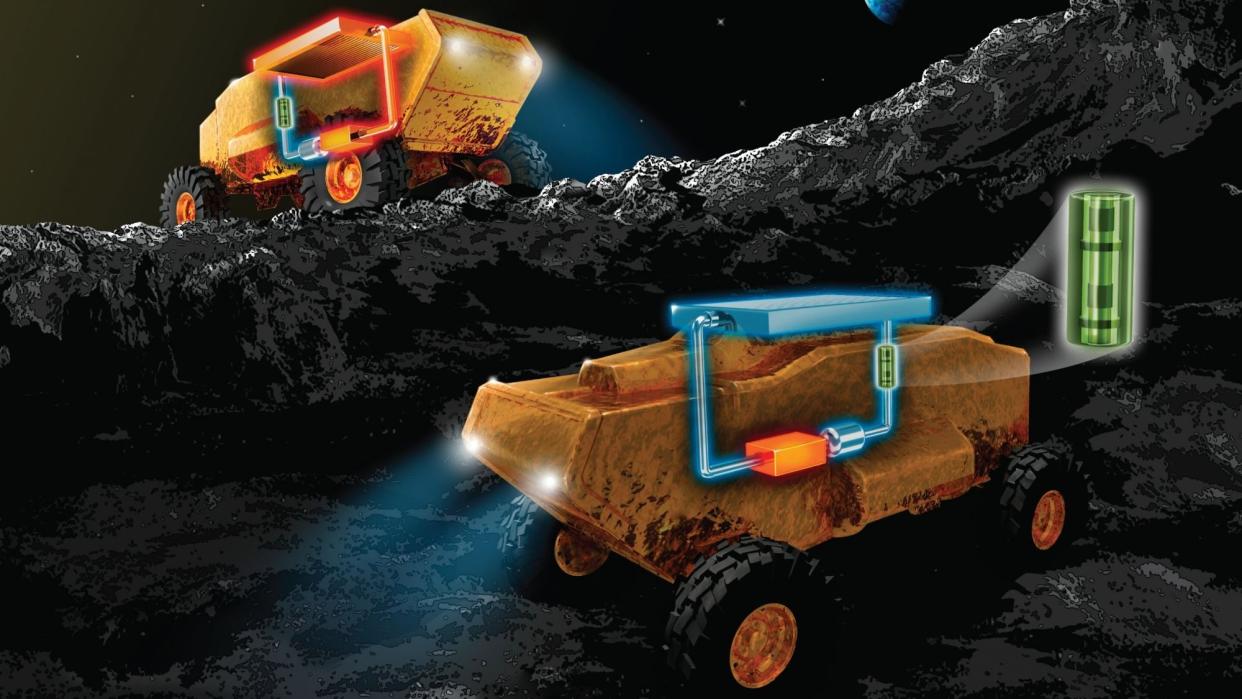Moon rovers are evolving to survive the harsh lunar night

With 260-degrees Fahrenheit days followed by weeks-long evenings dipping down as far as negative 280 degrees, lunar explorers like Japan’s SLIM can only withstand so much environmental punishment. But if humanity intends to establish a permanent presence on the moon, astronauts will need more adaptable equipment for the long haul—and researchers are developing innovative solutions to ensure tools like lunar rovers are up to the task. Existing lunar rover insulation systems generally utilize expensive heaters or lower-efficiency passive valves attached to loop heat pipes (LHPs) for temperature regulation. To solve this issue, an engineering team at Nagoya University recently collaborated with the Japan Aerospace Exploration Agency (JAXA) to design a middle ground heat-switch device that oscillates between cooling and warming a lunar rover’s onboard electronic equipment. Their prototype, detailed in the journal Applied Thermal Engineering, combines an LHP with an electrohydrodynamic (EHD) pump to create an incredibly efficient, low-powered device that is equal parts refrigerator and laptop cooling system. [Related: Wild NASA proposal envisions magnetic hover trains on the moon.] Masahito Nishikawara, paper co-author and lead researcher, called such heat-switch technology “essential for long-term lunar exploration” in an accompanying announcement earlier this month. “During the day, the lunar rover is active, and the electronic equipment generates heat. Since there is no air in space, the heat generated by the electronics must be actively cooled and dissipated,” Nishikawara said. “On the other hand, during extremely cold nights, electronics must be insulated from the outside environment so that they don’t get too cold.” To address these hurdles, the team’s new thermal control device first relies on a phase-shifting refrigerant inside its LHP during blazingly hot lunar days. As the liquid evaporates, its accompanying heat is released through a rover’s radiator—a process that repeats after the refrigerant cools and condenses back into a liquid. During lunar nights, the EHD pump turns on to generate an electric current through the fluid. This creates a magnetic field that exerts enough pressure to block the refrigerant’s movement in the LHP. In doing so, the rover’s electronics remain entirely insulated from the subzero temperatures while expending only small amounts of energy. “This groundbreaking approach not only ensures the rover’s survival in extreme temperatures but also minimizes energy expenditure, a critical consideration in the resource-constrained lunar environment,” Nishikawara explained. “It lays the foundation for potential integration into future lunar missions, contributing to the realization of sustained lunar exploration efforts.” The new system likely won’t remain confined to lunar rovers. In the future, similar heat-switch devices may find their way into larger transport vehicles and spacecraft, providing astronauts, not just machines with critical protections.

